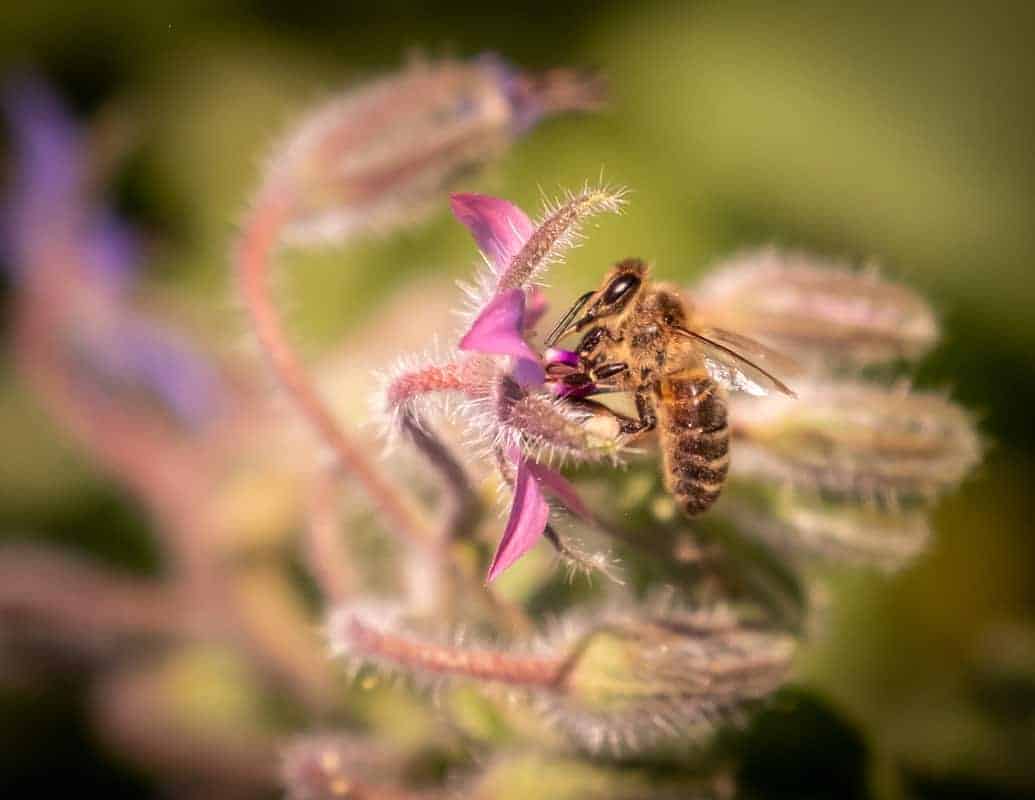A curious hotel in Costa Rica receives flying guests: bees of solitary and itinerant species that arrive in search of a place to reproduce and pollinate flowers.
A structure filled with small hollow trunks and bamboo stands out in the central park of San Ramón, some 60 km northwest of San José. “Hotel for bees,” it says on the main sign, under which numerous specimens of these stingless species come and go.
“A bee hotel is a site that can provide nesting for solitary bees, especially species that usually nest on dry or dead twigs. They require a place like a tube and sometimes it is a limited resource in the environment,” said Paul Hanson, a biology professor at the University of Costa Rica (UCR).
Hundreds of neighbors pass in front of the unique hotel every day, some unaware of its existence and others unaware of its existence. The architect Félix Esquivel, councilor of the Municipality of San Ramón, said that the municipality has declared itself a “friend of the bees”.
“San Ramón has all the environmental conditions for the bees to live in a balanced way and, of course, to enjoy the contribution that they give us in agriculture and in the landscaping,” he adds.
This “neuralgic point of the bees”, as Esquivel calls it, was an initiative of the Municipality to turn the place into an attraction. “In Costa Rica and San Ramón we love bees,” he says.
Worldwide Problem
At the UCR Biology campus in San José, there is also a “bee hotel”. Professor Hanson and other academics started a project in 2019 to provide certain species with shelter for nesting and reproduction.
“The bees that require this type of structure, the ‘bee hotel,’ are solitary species, which are the majority. In Costa Rica there are between 600 and 700 species of bees, and 80 to 90% are solitary. This means that each female makes her own nest and they do not live in colonies,” Hanson explains.
Next to the structure, in a nearby tree, the bees pierced the bark to make their own shelter, and a few steps away, a wooden honeycomb shelters several more bees.
The reduction of their habitat is a global problem. The UN notes that “nearly 35% of invertebrate pollinators – in particular bees and butterflies – (…) are globally threatened with extinction”.
Hanson warns of several risks that end up depredating the ecosystem of these species and causes “fewer places to make their nests”.
“Foremost among the risks is habitat loss. With urbanization and agriculture there are fewer resources, both flowers and nesting sites. Also, today pesticides are affecting a lot,” warns the biologist.
Hotels “are necessary,” Hanson points out, because bees use them to bring nectar and pollen from nearby flora as food for their larvae.
It’s the future
The buzzing of bees around the hotel in San Ramon mingles with the screams of children playing on a nearby playground. Some walk past their parents and stop to watch the insects. “Look mom, bees live here,” says a little girl as she crosses next to her mother in front of the structure.
The youngest and the oldest are the ones who become more aware of the “bee hotel”. Juan José Alvarado, a 71-year-old retiree, says as his grandchildren watch the bees that “it is very important for children to know about this concept.”
“It is the future. If there is no pollination there is no food, so the children above all must strengthen that and always support so that there is more and more pollination and fewer bees killed by insecticides,” he explains.
Also, for Adela Mora, a 77-year-old retiree, the importance of raising awareness about the protection of bees is essential.
“The bees in the world are being exterminated, they are killing them all, the fumigations they do are exterminating them. So, it turns out that this (helps) them to reproduce (…) They say that without bees’ we humans will all die, and people don’t understand that and kill them,” says Mora.






